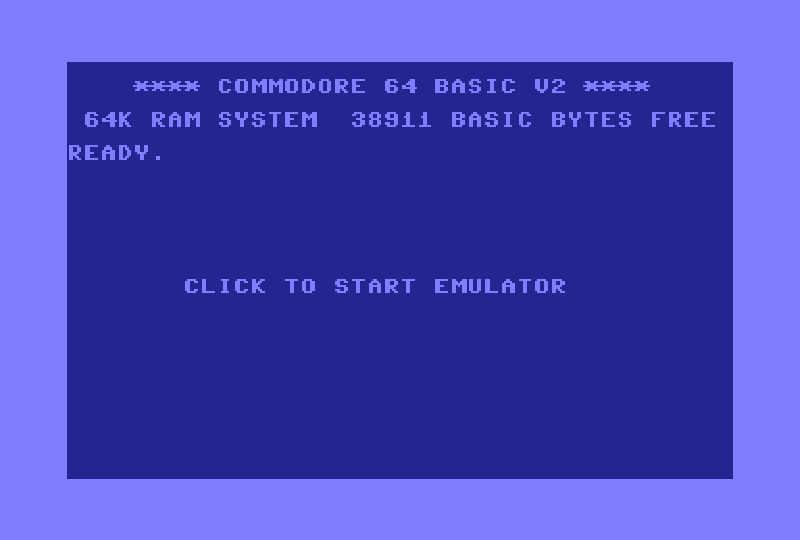Chapter 1: The BASIC Computer for Family, Business, and Education
These are the examples for chapter 1 of Too Much Fun. Select chapters in the menu.
Selling the Commodore 64
Page 39: The now-iconic Australian “Keeping Up with the Commodore” ad series consists of a combination of clips that largely consist of the following: a person interacts with a Commodore 64, then turns to the camera, smiles, and salutes. These clips of Commodore users are intercut with gratuitous footage of people (typically young women) enjoying themselves outdoors, often without the presence of a computer of any kind. The only programmer is the teenage boy typing away at his Commodore 64, pen and paper at his side. A book entitled “Background to Careers,” rests on top of his monitor, implying that even though this boy is not presently using his computer professionally, he is professionally minded, and his computer usage is a means of preparing for his financial and vocational future.
Page 41: A 1983 or 1984 Italian TV ad shares the template, explaining that the new Commodore 64 can be used at work (adult man), for studying (adolescent male), and at home (adult woman) … and for games, “giochi, giochi!”. It also asks viewers how they can manage without a Commodore 64, implying both the practicality of the machine and the importance of not falling behind technologically. Counter to this, the “giochi, giochi!” exclamation hints at the pure joy of a new kind of entertainment.
The BASIC game platform

Page 47: What was the most popular computer game of 1978? In the book BASIC Computer Games, Microcomputer edition, David Ahl says that Lunar Lander "in its many different versions and names ... is by far and away the single most popular computer game."
A Serious Computer

Page 49: Software developers took the C64 seriously as a machine for productivity, and word processors included Commodore’s EasyScript, VizaWrite, Data Becker’s Textomat, and many more. Magazines would sometimes make small versions of such software available, like Compute!’s Gazette’s 1984 type-in word processor program SpeedScript. Word processors were at the time sufficiently new that the magazine editor wrote an accompanying introduction to how one would concretely use a word processor, and how it compared to typewriter:
"You may have heard or read elsewhere about the advantages of word processing: Documents are typed not on paper, but on the video screen. Characters, words, phrases, sentences, paragraphs, or even large blocks of text can be modified, deleted, inserted, added to, moved, duplicated, and manipulated to your fingers' content."
Starting to Program

Page 42: As the Commodore 64 User’s Guide helpfully explains, you can simply type a command to print something on the screen, for example “Hello World” (the manual suggests we write “Commodore 64”) .
PRINT “HELLO WORLD!”

Page 54: The RANDOM GRAPHICS example generates a maze by randomly switching between two diagonal lines. This incidentally served as focus of an entire book, 10 PRINT CHR$(205.5+RND(1)); : GOTO 10.
Sprites

Page 55: Sprites was the solution chosen for moving objects quickly on the Commodore 64. The video chip allows developers to move 8 small images, “sprites”, generally on top of the background, with no need to redraw the underlying pixels. Programmers can just change one or two bytes to show where a sprite should be displayed. Try moving the sprite:
POKE V,100
POKE V+1,80

Sprites can be single-color (high resolution) or multicolor (lower resolution), and they can be expanded horizontally and vertically.
Sound

Page 55: The Commodore 64 User's Guide explains that programmers generally use sound for either music or sound effects. A Michael, Row the Boat Ashore sample program is provided.
Snake

Page 57: The author’s 1985 BASIC version of Snake, easily programmed on the C64 using the PETSCII character set. Like the BASIC tradition influenced C64 homebrew development, so did games from other platforms.
Control using Z:left, X:right, L: up, M: down.
The end of Basic

The author’s 1989 Trick des Monats (Trick of the Month) program in German 64'er Magazin.

Page 57: As developers gravitated towards machine language, type-in BASIC programs became delivery mechanisms for such programs. This is the author’s 1989 Trick of the month program for German 64’er Magazin, enabling smooth scrolling of the regular BASIC interface. This BASIC program reads the DATA statements and places a machine language program in memory, but the listing itself does not show the machine language instructions. Typing programs became increasingly tedious, and as the listing doesn’t show the machine language instructions, you did not learn about programming from typing it.
